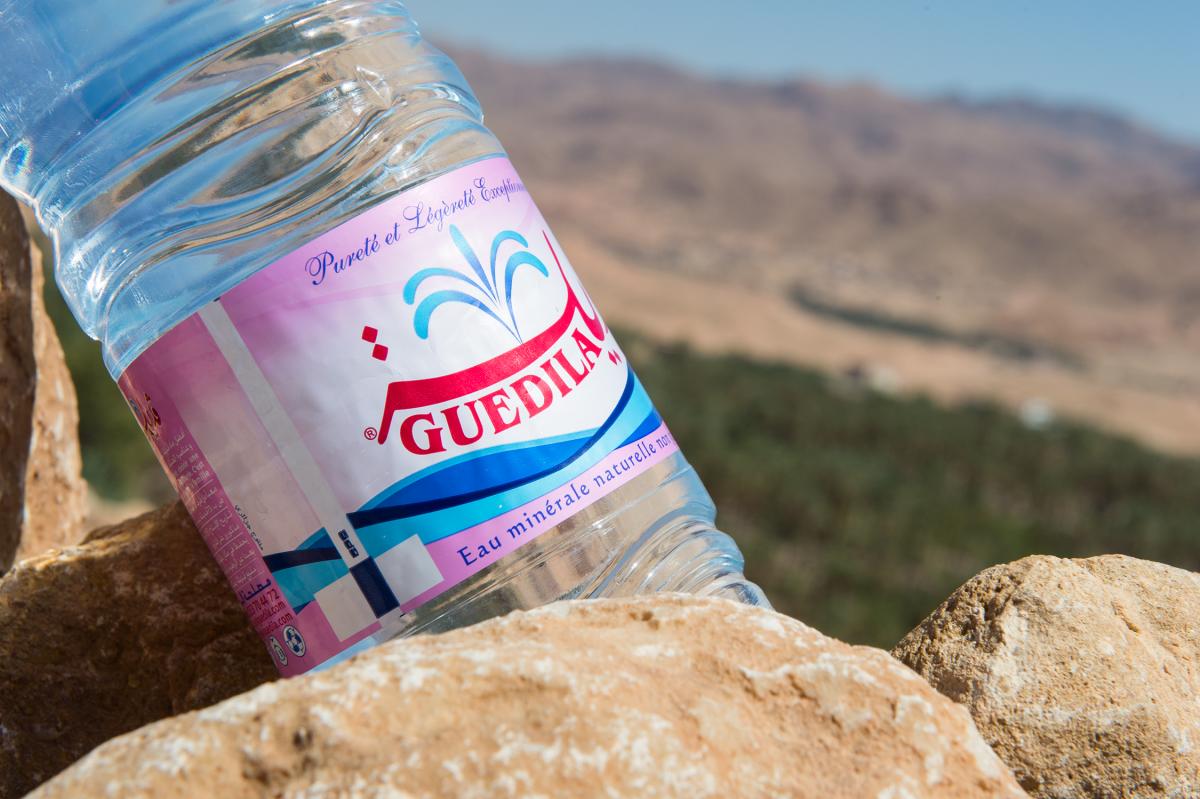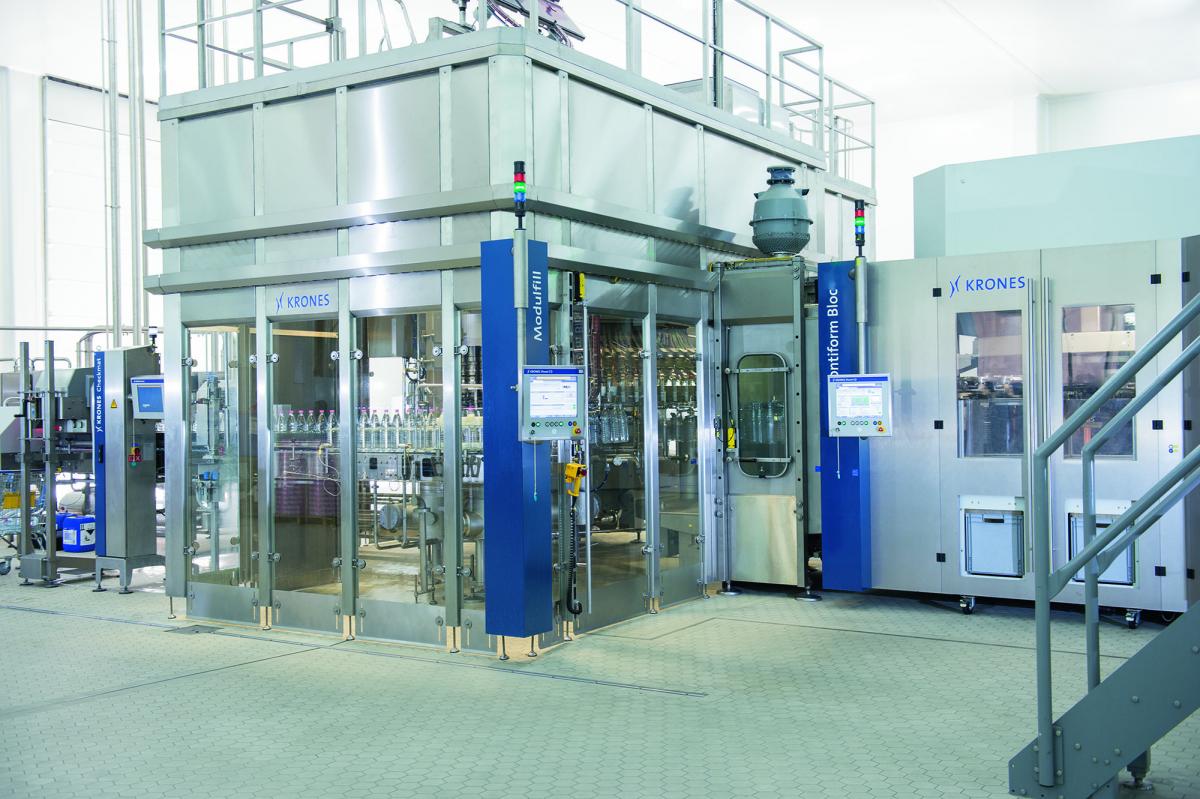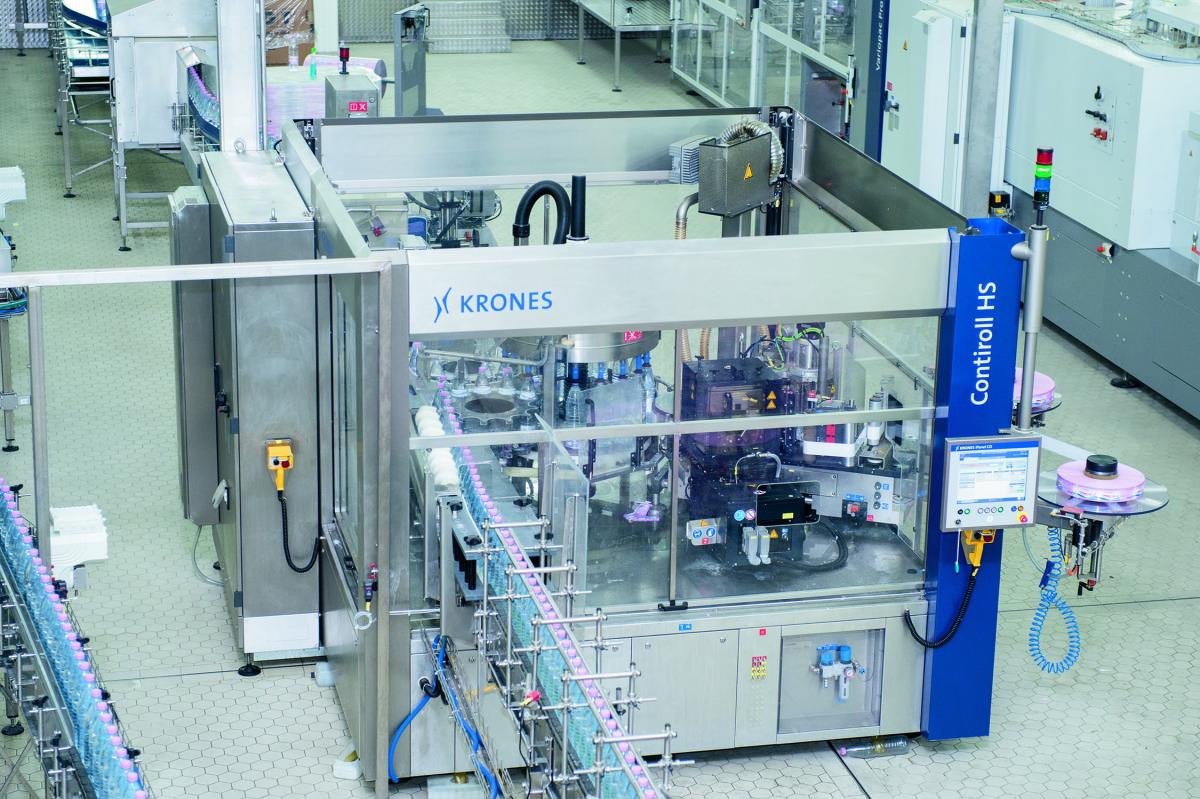IN Algeria, Guedila ranks among the market leaders for bottled water. In the spring of 2014, the company invested in a technical upgrade, in the shape of two PET lines for still water, opting for technology from Krones for the first time.

The water bottlers Guedila are embedded in Algeria’s boundless vista of sand and mountains
Guedila has been operating the two identical Krones lines since early 2014. Their heart is a blow-moulder/filler block, comprising a Contiform, a Modulfill with 90 filling valves and a capper. Both these lines begin with the preform feed, as these are poured into a Kosme Revopack Preform-Kipper. They are then orientated to perfection in the automatic Contifeed roller sorter. Guedila attaches major importance to ultra-rigorous standards of hygiene, which is why they use a Krones Prejet. The rinser cleans the preforms using ionised air, UV light destroys harmful germs. Only then will the PET preforms be passed to the stretch blow-moulding machine. Both lines fill 1.5-liter bottles at a rated speed of 36,000 bph, or the 2.0-liter size at 30,000 bottles an hour. These latter are produced specially for Ramadan, the Muslims’ month of fasting. For thirty days, the 2-liter bottle can then be purchased for the same price as the 1.5-liter size, which means: three liters free of charge in each pack. Guedila runs its production lines in three shifts, operating round the clock.

Guedila is operating two identical Krones PET lines. Their heart is a blow-moulder/filler block. Both lines fill 1.5-litre bottles at a rated speed of 36,000 bph, or the 2.0-litre size at 30,000 bottles an hour.
Besides the two lines from Krones, Guedila has two more lines, installed in 2004 and 2010. The company uses a total of seven different PET sizes ranging from 0.33 to 2.0 liters, and averages roughly three million fills of still water a day.
On each of the two Krones lines, the containers are labelled by a Contiroll HS with two stations. Dressed in their wrap-around labels, the bottles then proceed to the packer – which in this case is a Variopac Pro. A spacer guides the containers from four lanes onto six. The containers are formed into sixpacks, wrapped in film and fed into the shrink tunnel. The handle-strap is applied. After this, the packs are transported to the floor below, where they are grouped using a Robobox – all this is fully automated – so as to create the layer pattern specified. A Krones Modulpal ensures high-precision palletising. Downstream of the stretch-wrapper, the finished pallet is first moved outside onto a platform, and then downwards in a lift. Then it travels on a Krones PalCo conveyor for the final few meters of its journey until it’s in position for being collected and loaded up. Two fork-lift-truck drivers, one on the left and one on the right, load the pallets onto the waiting trucks. The freshly filled bottles are transported to a logistics center (mostly in the cities) and from there to the dealers’ shelves.

On each of the two Krones lines, the containers are labelled by a Contiroll HS with two stations
Adidas Fotballsko













